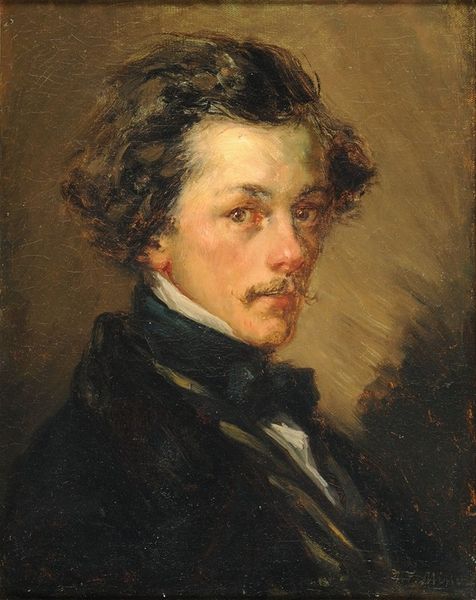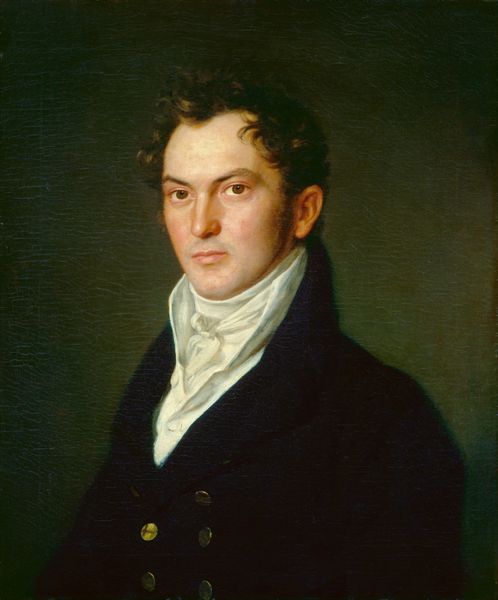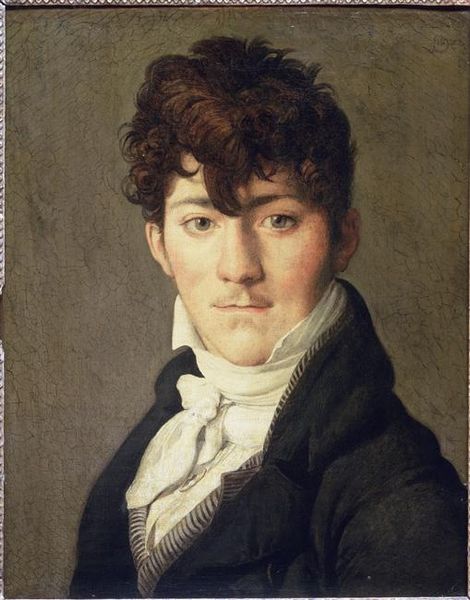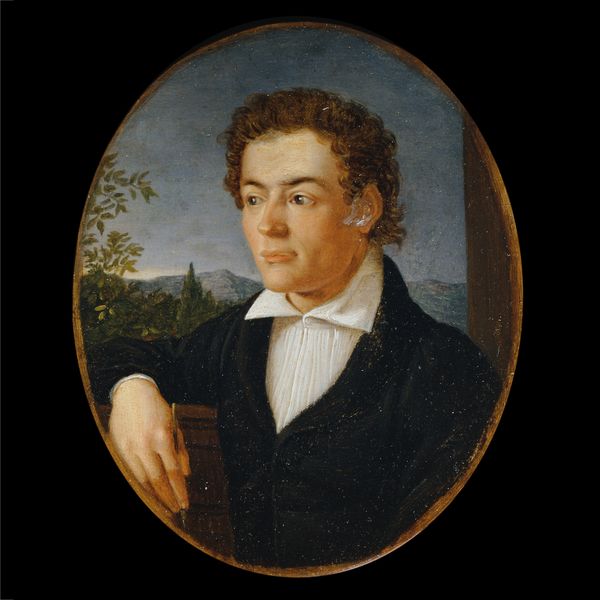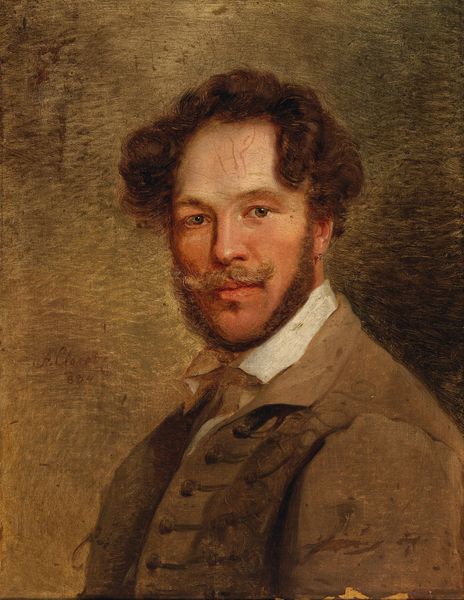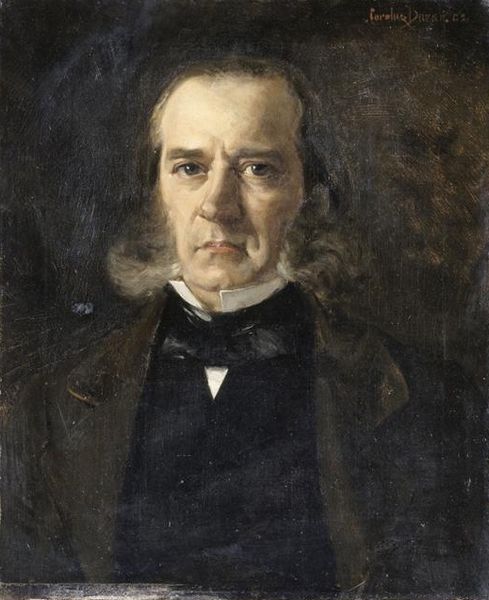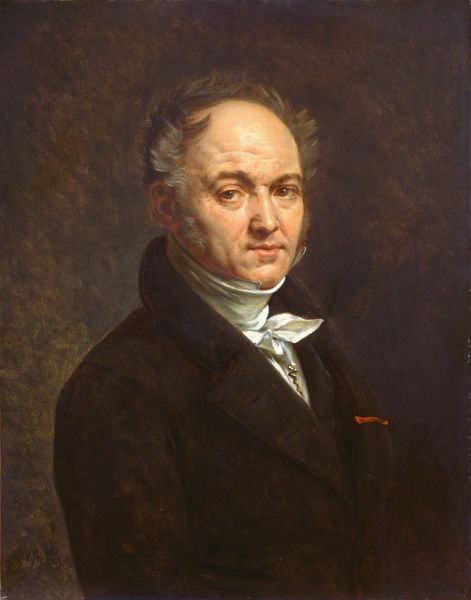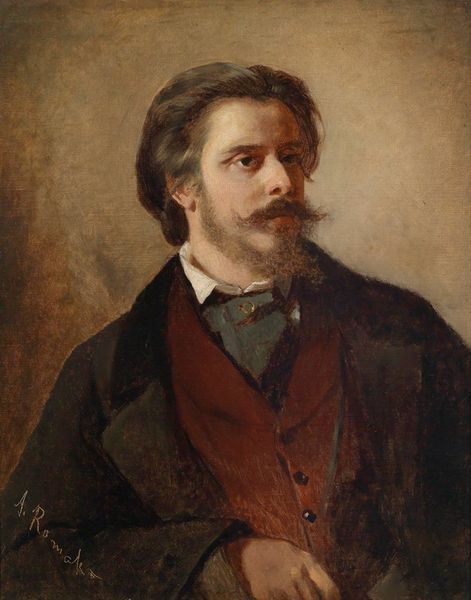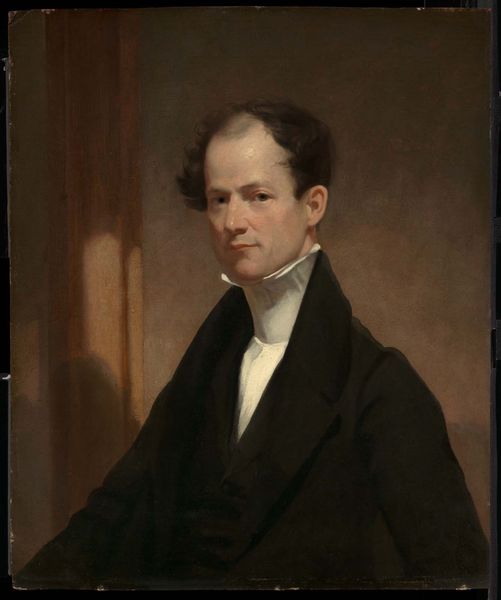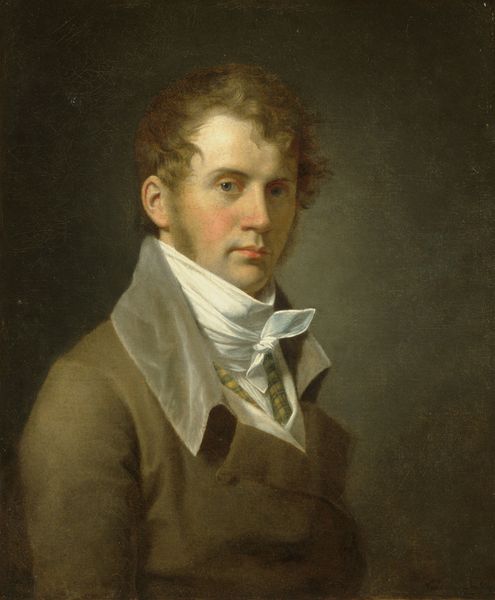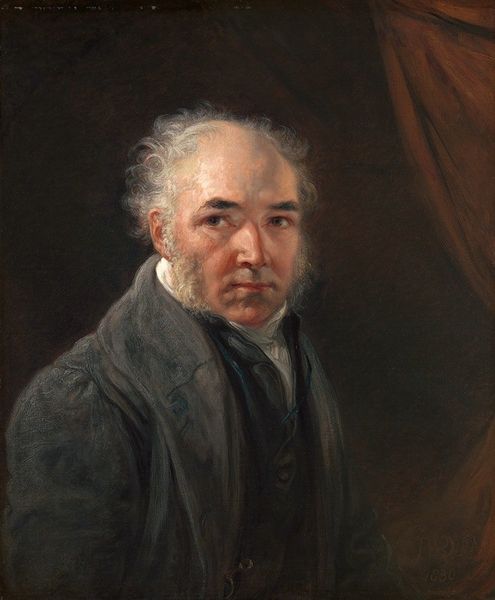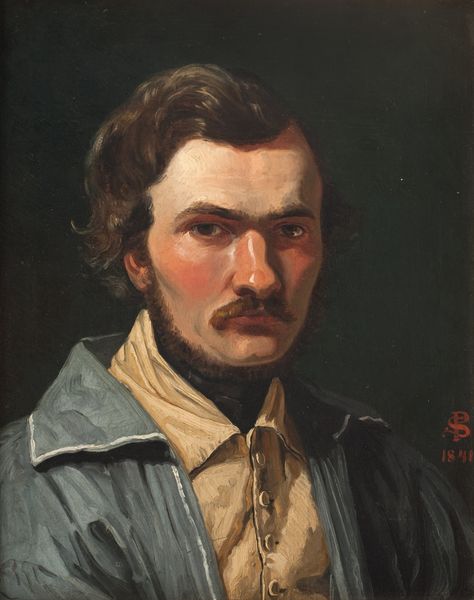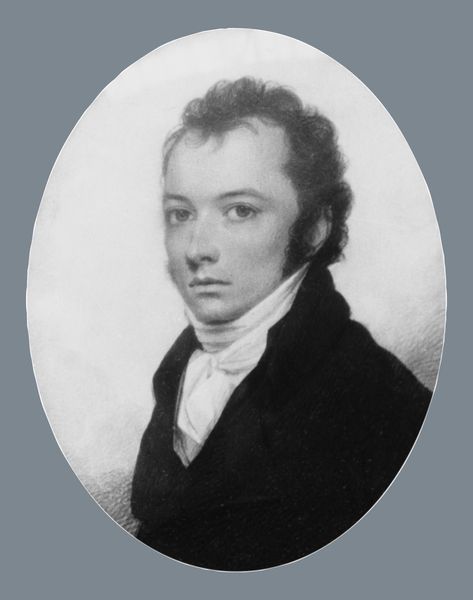
painting, oil-paint, canvas
#
portrait
#
portrait image
#
portrait
#
painting
#
oil-paint
#
figuration
#
canvas
#
portrait reference
#
portrait head and shoulder
#
romanticism
#
portrait drawing
#
facial portrait
#
portrait art
#
fine art portrait
#
celebrity portrait
#
digital portrait
Dimensions: 63 cm (height) x 50.5 cm (width) (Netto), 83.2 cm (height) x 70.7 cm (width) x 8.7 cm (depth) (Brutto)
Curator: Before us is Ditlev Blunck's "Portrait of the Scene Painter Troels Lund," painted in 1831. It's an oil on canvas currently residing in the SMK, the Statens Museum for Kunst. Editor: My first impression is… introspective. There's a controlled use of color, mostly muted earth tones. It all serves to really pull your attention to the subject's face, which seems caught between hope and melancholy. Curator: Yes, the painting encapsulates a burgeoning Romantic sensibility. Blunck was part of the Danish Golden Age, and this portrait subtly hints at the shifting role of the artist within society. Note the confident yet slightly withdrawn posture. The crossed arms might suggest a defensiveness, but it can also symbolize creativity being held in reserve. Editor: From a formal perspective, the stark contrast between the dark background and the figure’s lighter complexion throws his face into sharp relief. The composition, which neatly follows the rule of thirds, reinforces a feeling of poised reserve. Curator: It's interesting you note the pose; arms crossed were something of a trope in portraiture of the time—yet not always. In the visual language of the 19th century, it could denote intellect, self-assurance, or even a certain world-weariness, fitting for a figure in the theatrical arts. Editor: Exactly. He's not ostentatious, but his very controlled appearance communicates a careful performance. Also, that precisely tied neckcloth becomes almost iconic; a concentrated symbol. It speaks of identity as performance. Curator: It also evokes an aura of the artist as a unique individual, set apart. His gaze meets ours directly, but there's a challenge there, an invitation to see beyond the surface. Think, too, about the cultural memory imbued within these poses—the shifting expectations and archetypes shaping identity through visual means. Editor: Considering all the components—form, subject, historical and cultural implications—what ultimately strikes me is how timeless such a portrait is. It has a remarkable immediacy and that muted palette contributes to the subdued but affecting sentiment. Curator: Yes, indeed. It reveals as much about our continuing dialogue with the past as it does about Troels Lund and the artistic currents of his era.
Comments
No comments
Be the first to comment and join the conversation on the ultimate creative platform.
